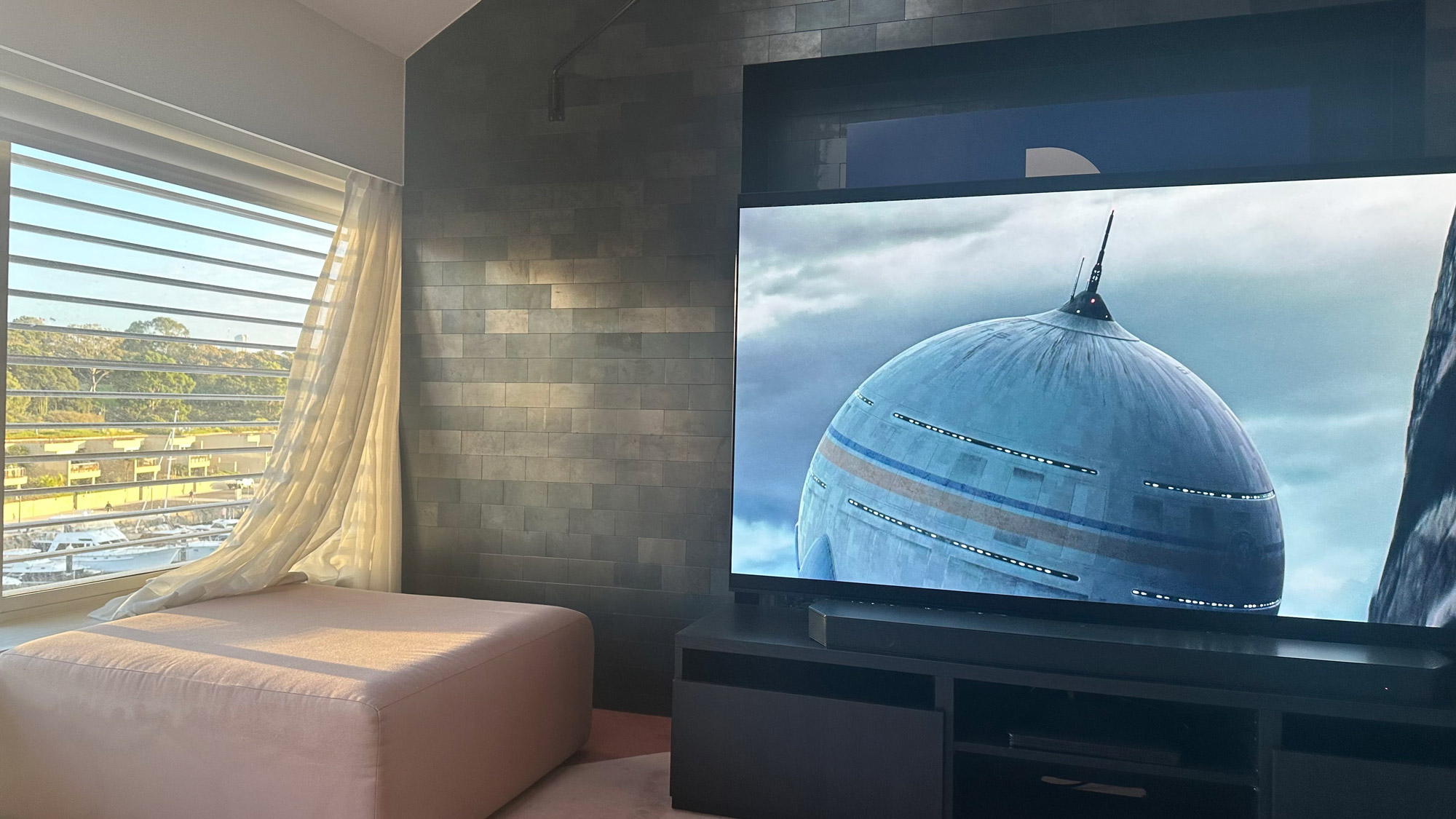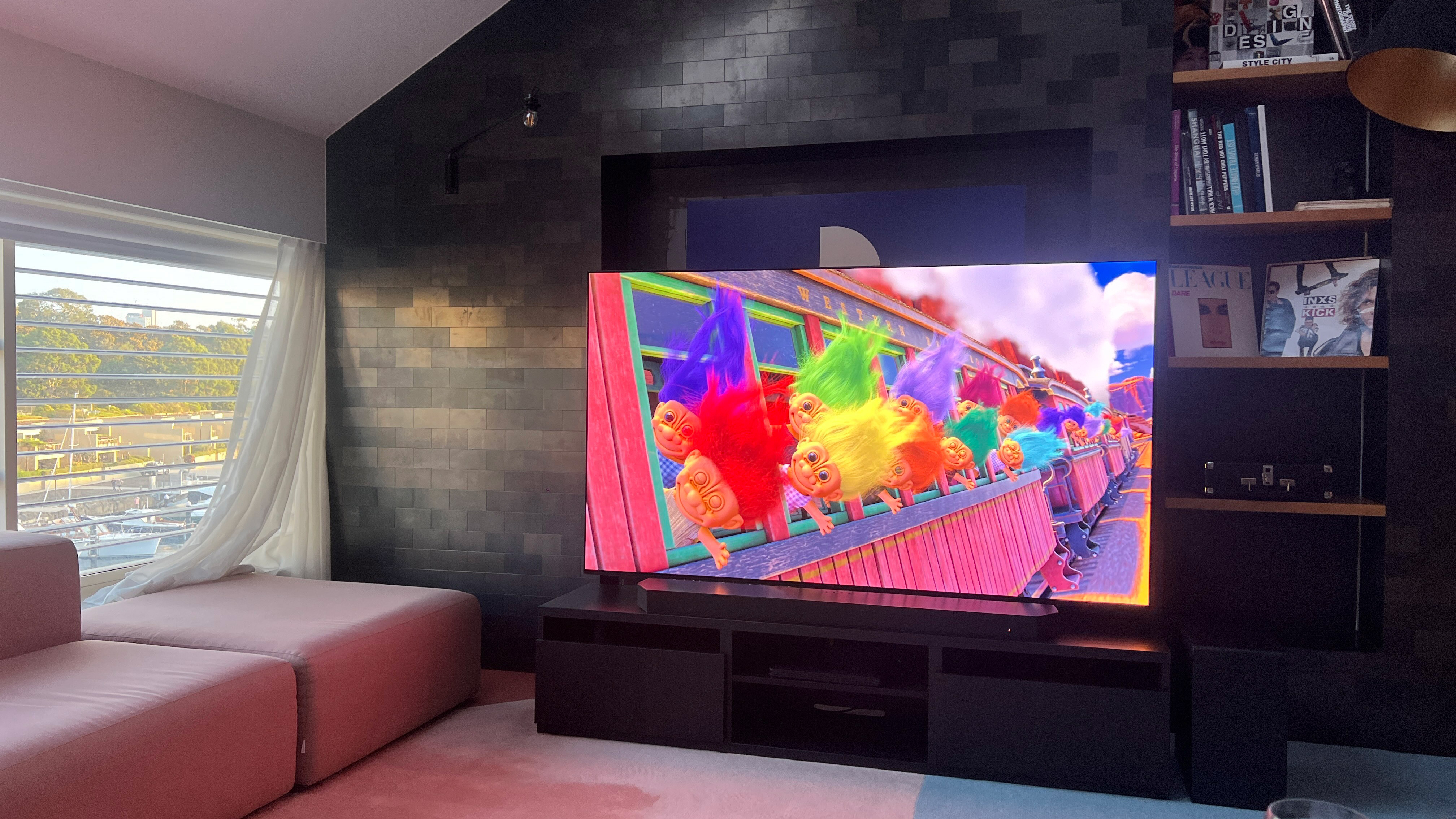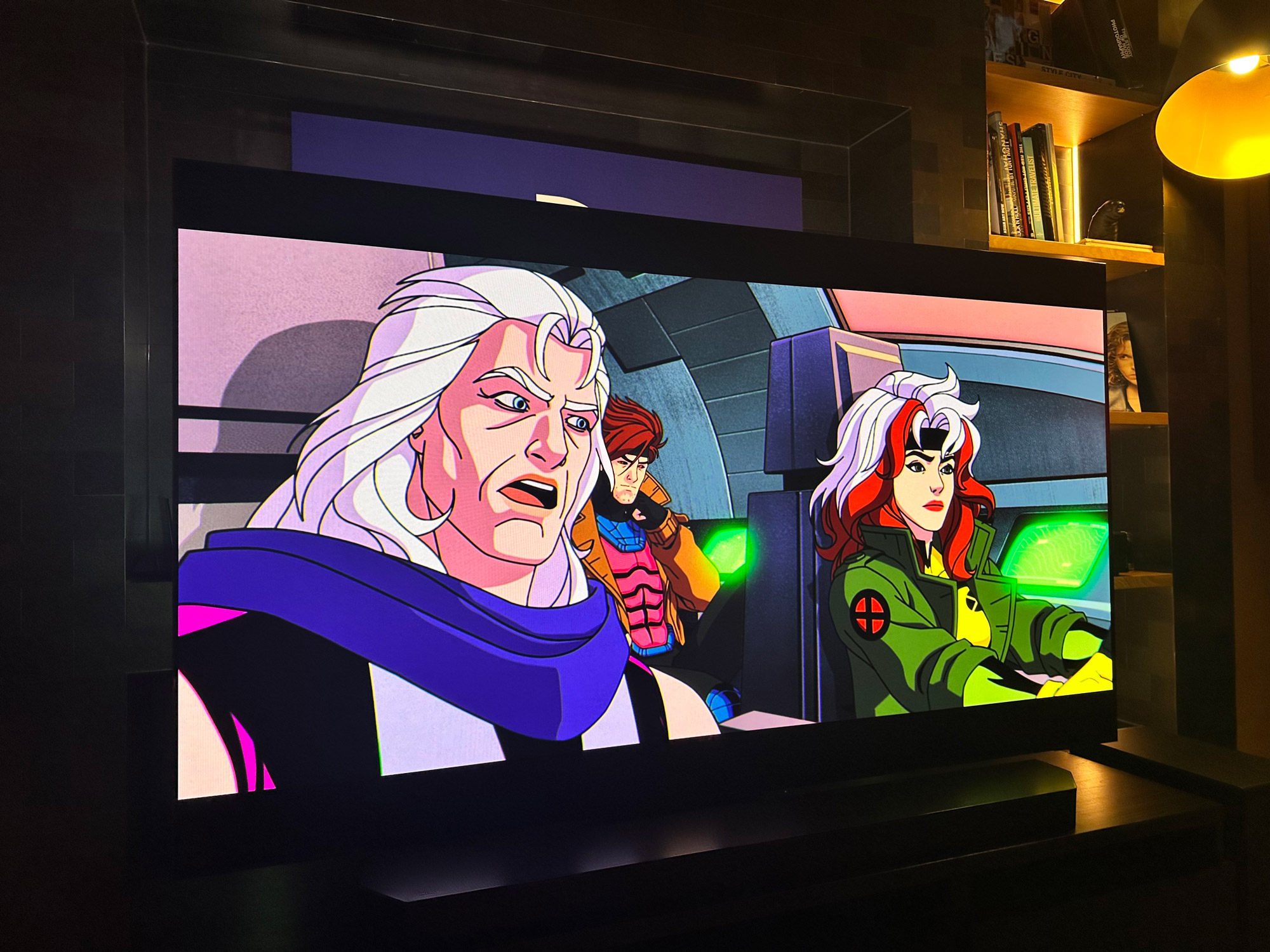
When Samsung announced its 2024 lineup of QD-OLED TVs and soundbars at CES earlier this year, it made for exciting reading. Not only did the latest series of screens have an incredible base from which to improve on in the form of 2023’s impressive arsenal, but the introduction of Glare Free tech in the flagship S95D was enough to convince me that Samsung really was the TV maker to keep an eye on this year.
The same goes for Samsung’s soundbar range, too. The Samsung HW-Q990C was by far and away our favorite Dolby Atmos soundbar to be released in 2023, and at the time it didn’t like there was much it could improve on – not that it necessarily needed to.
Our five-star Samsung S95D review confirmed our preformed opinions – both of everyone here at TechRadar, and my own. In the review, my colleague James Davidson said it’s what “OLED TVs should strive to be.” Naturally, I wanted to experience it with my own eyes if the chance ever came calling. And if the equally five-star Samsung HW-Q990D soundbar could be included too, well then it would basically be Christmas come early for me.
Happily, it did, as Samsung Australia invited me to test the 77-inch version of its flagship screen accompanied by the flagship HW-Q990D Dolby Atmos soundbar.
While you can of course read our reviews in full to determine how good both the S95D and HW-Q990D function as standalone products, it was the overall package combination of both screen and soundbar I was most interested in experiencing, to see if it could claim the title as best home theater package, thanks to Samsung's Q Symphony tech that makes them work together especially well. The quick answer is yes, and you can read why below.

Convenient home theater never sounded so good
While I was keen to go eyes on with the Samsung S95D, it was actually the company’s latest HW-Q990D Dolby Atmos soundbar that really persuaded me to accept Samsung’s invitation. I’m a sucker for a good Dolby Atmos soundtrack, and have been ever since the enveloping sound technology was introduced many moons ago. But getting good, authentic Dolby Atmos in the home isn’t as simple as getting a great picture.
I’ve heard many of the best Dolby Atmos soundbars, including the JBL Bar 1300 and Samsung’s own Q700C, which doesn’t have rear speakers, but still does a convincing job of creating a larger soundfield in your room. The Samsung HW-Q990D is by far and away the best I’ve ever heard – if you want Dolby Atmos at home but don't want to deal with a real speaker system, nothing else comes close in my opinion.
Serving up 11.1.4 dedicated speaker channels, sounds were accurately placed around my seating position, but crucially there was the all-important height. What I found particularly impressive about the height the sound from Q990D was able to achieve was that it handled the high ceilings of the hotel room I stayed in with no issues – it was still able to bounce the soundwaves off the high ceiling and back down to my position accurately, which is not a guarantee for a device that'll mostly be used in more standard living rooms.

I also appreciated the fact each channel can have its level adjusted, which can be useful if the rear speakers for example aren’t placed at equidistance behind the seating position. Each time you turn the Q990D on, it will carry out its own calibration to ensure each channel is performing at its best, but if you’re not fully happy, you can go through a trial and error process of adjusting each to your preference.
Samsung has once again included its Q Symphony feature with the Q990D. This feature works when the soundbar is paired with a compatible Samsung TV (the S95D is compatible) and combines the speakers of both the soundbar and the TV into one audio system, with the aim of delivering even more gusto and precision for positional sounds. When paired, Samsung’s Q Symphony intelligently determines which parts of a soundtrack should be handled by the TV and speakers and which should be best left to the soundbar.
In practice, there was indeed an even greater sense of height, facilitated by the speakers built into the S95D, and voices came through a touch clearer too. I wouldn’t say it works for every single movie or TV show, and I actually found myself leaving it turned off more than I had it turned on.
I can certainly appreciate that the feature does work, as there is an obvious transformation in the overall presentation that even the most untrained of ears will notice. If you do find yourself with this Samsung combo in your room, I would definitely recommend trialling it to see if it works to your personal preferences.
Another very minor niggle was that I did feel the left and right front channels could have been a touch wider in their presentation, even after adjusting them within the soundbar settings. Dedicated left and right speakers would prevent this, but then they would also need the space to be placed in the room. But what was undeniable was just how powerful the overall performance was – at one point the bar in the room was vibrating from the booming bass of the wireless subwoofer.
Daytime viewing never looked so good

Packing Samsung’s latest Neo Quantum Processor 4K and Glare Free technology, watching movies on the S95D is without doubt the best home theater experience I've had. I switched between preset picture modes and settled on Movie and Filmmaker as my favourites, as they provided the expected cinematic look. Images had great depth, motion was spot on, and colors were the most realistic.
What I was perhaps most impressed by was the Samsung S95D’s upscaling capabilities. I watched the opening scene from Scream 2 in sub-4K resolution, as I know it well, and I’ve viewed it on a variety of screens to varying effects. When I watch it on my LG G3 OLED at home, it doesn't look that good, as there is an unacceptable amount of noise introduced, in my opinion.
There were no such issues on the S95D and, while the overall picture obviously didn’t quite compare to native 4K content, I was scarily impressed with how well the S95D handled the ageing movie.
I obviously had to test out native 4K content too, and so loaded up options such as The Incredibles and Stranger Things. The latter I find to be an especially good tester, particularly the opening scene of the first episode. It’s an incredibly dark scene and I’ve previously found LG’s QNED81 LCD TV struggled with finding details in shadows and darker areas. The Samsung S95D suffered no such fate and if anything, it was the best I’d ever seen the show look whilst curling up on the sofa.
Similarly in the epic season four moment when Max has to run up a hill to escape Vecna, I was startled by just how cinematic the whole sequence looked. This is thanks to the S95D’s inherently stellar contrast, aided by OLED backlighting, its ability to handle color, and the anti-glare layer ensuring no details get lost to reflections of windows.
Speaking of color, to truly take the Samsung S95D out for a test run, I loaded up the opening sequence to Toy Story 3 on Disney Plus, which is inundated with blues, greens, pinks and reds as Andy’s toys act out a trailblazing Wild West scene. I watched this scene in the morning, with the aforementioned sun hitting shining in through the windows, to fully test the anti-glare layer. It just worked. I would normally have needed to shut the blinds to achieve a similarly bright and punchy image as the one the S95D was able to conjure up, but thanks to the Glare Free technology, there was no need.
Believe the hype about Glare Free tech

Occasionally, when TV manufacturers talk about and introduce new technologies, they can sometimes turn out to be gimmicks – here’s looking at you 3D – but Samsung’s Glare Free screen finish really is worth the hype.
It basically adds thousands of small holes invisible to the naked eye, that essentially absorb any external light and dissipate it across the screen. The dissipated lightwaves are broken down into those so small the human eye can’t see them. The result is a screen that returns virtually zero direct reflection, though you can still see a haze from bright lights – but it's a million times less distracting.
This proved especially effective the following morning of my hotel stay, as the sun rising was reflecting off nearby skyscrapers and into my hotel room, straight onto the TV. But as you can see in the images, there is no discernible reflection to be seen.
Not only does this mean you can watch TV shows and movies without necessarily needing to roll down the blinds or shut the curtains, but it also allows the detailed and bright picture quality to really shine. The Samsung S95D is around 20% brighter than last year’s S95C (which already exhibited crazy levels of brightness for an OLED screen) and I was truly amazed at the impact it had on overall picture quality.
Experiencing both the Samsung S95D TV and the accompanying HW-Q990D soundbar was truly a treat for – and an assault on – the senses. It’s a terrific home cinema combination that serves up incredible picture and sound quality in a convenient package.







